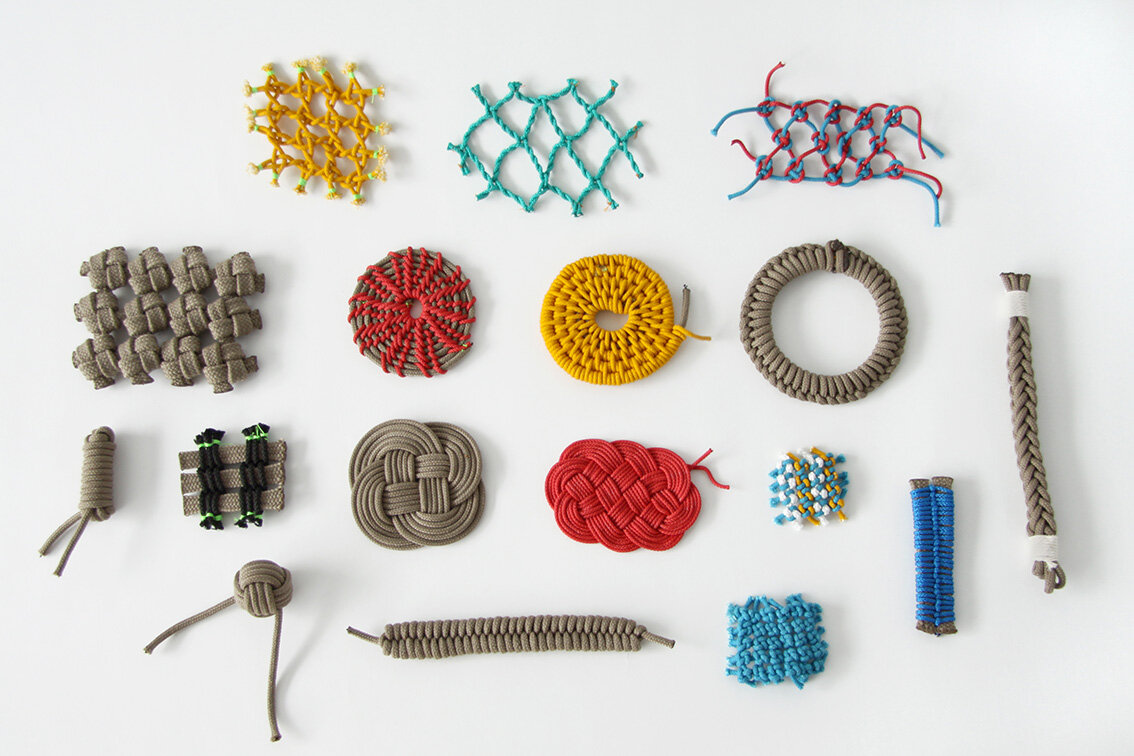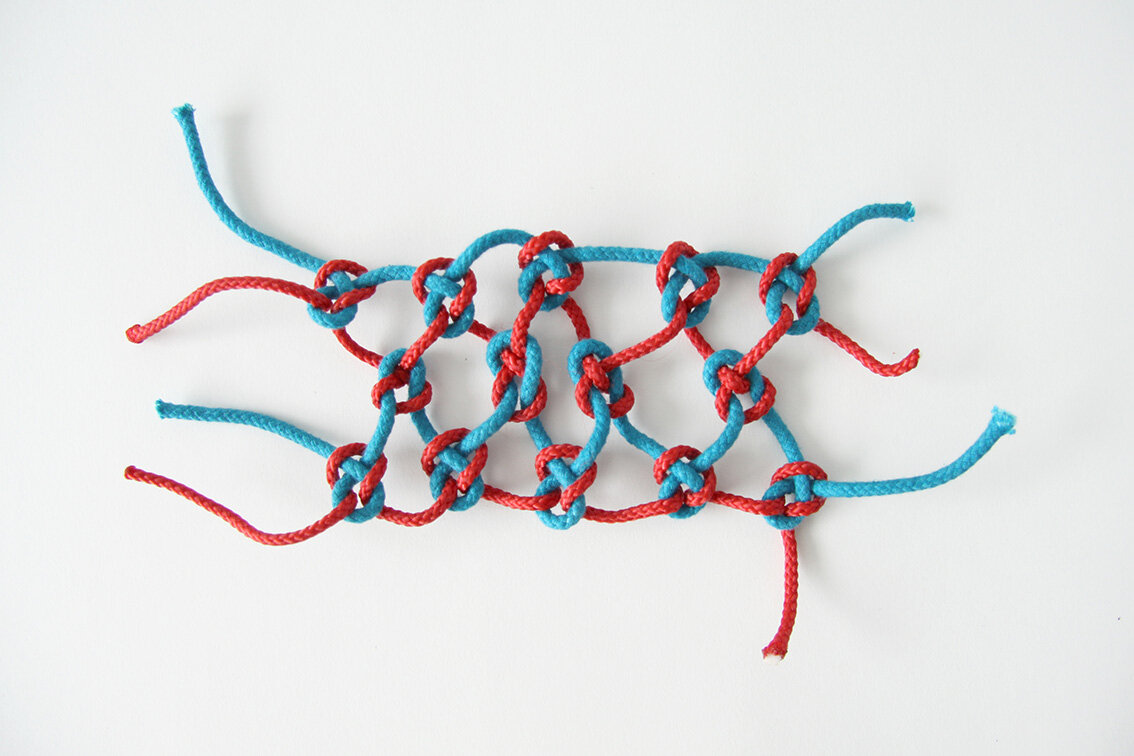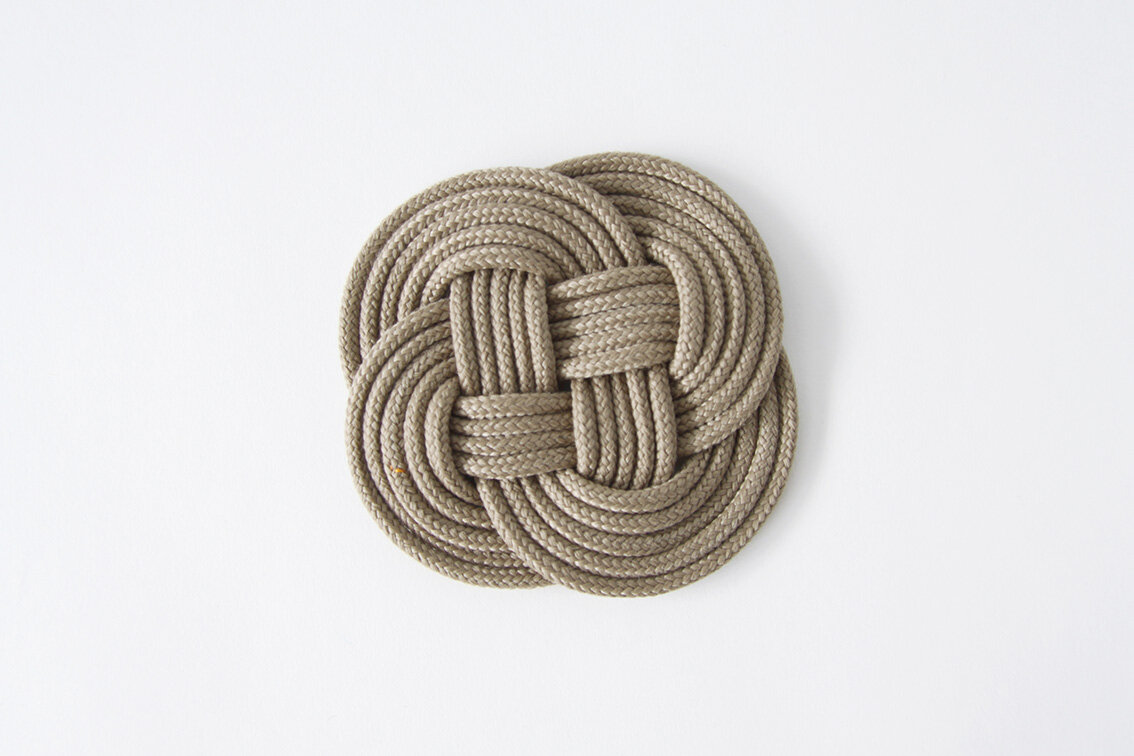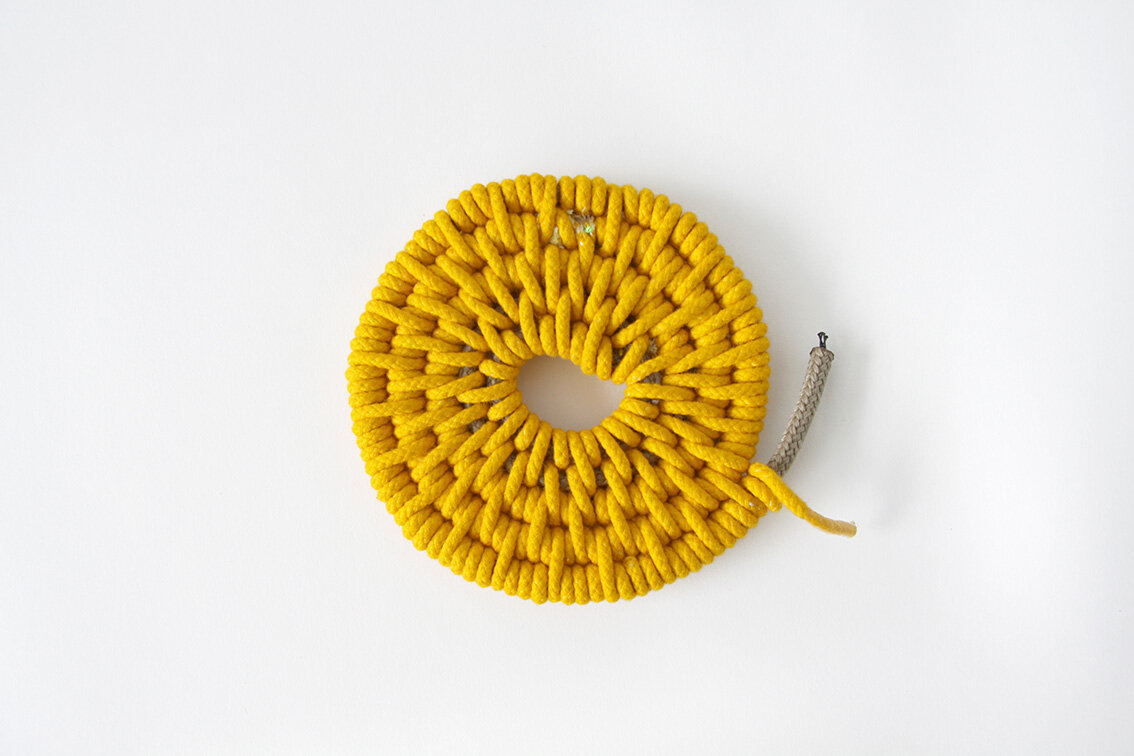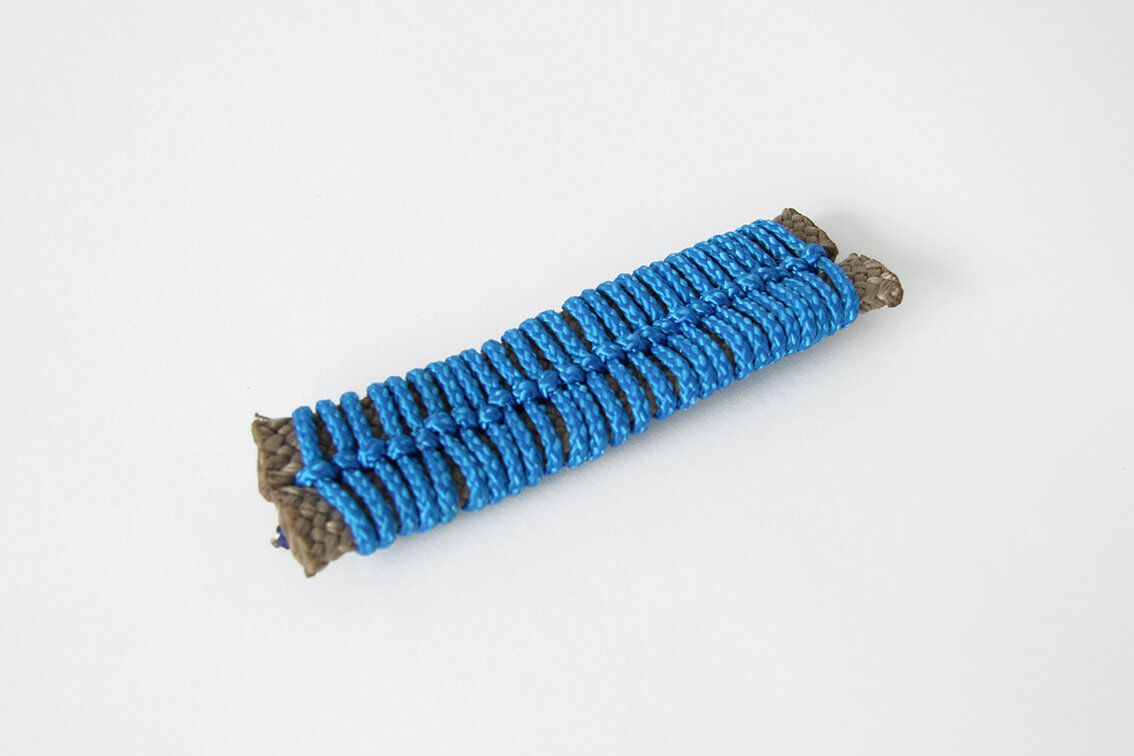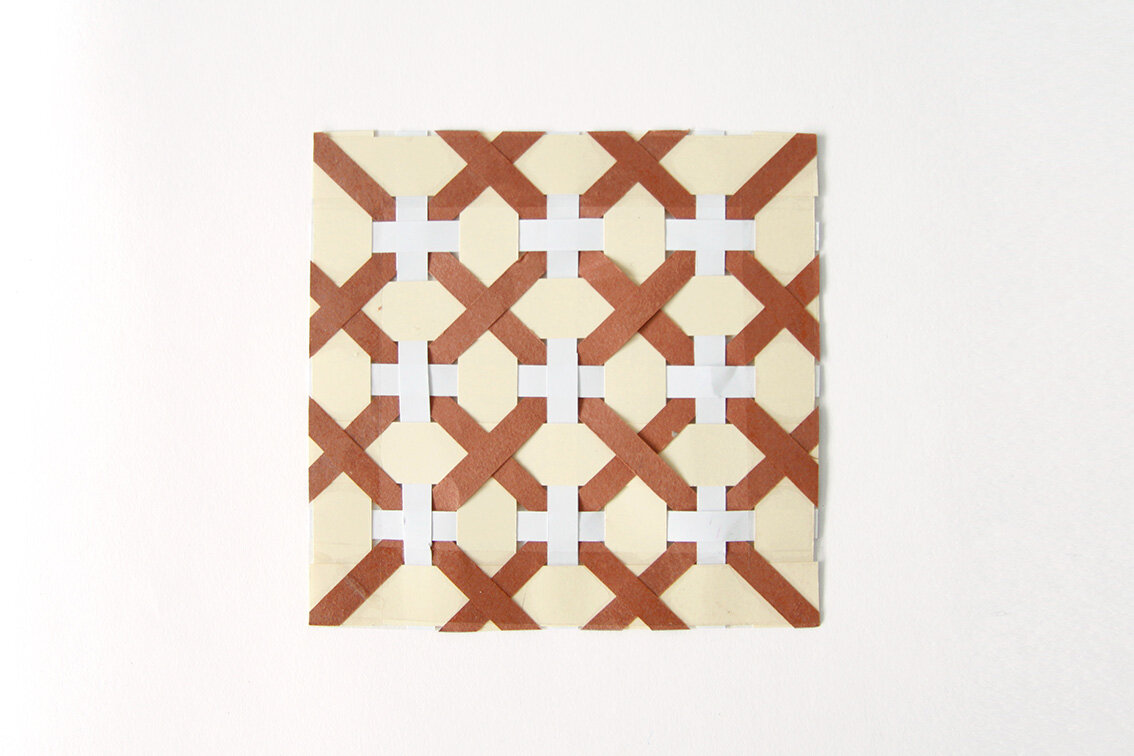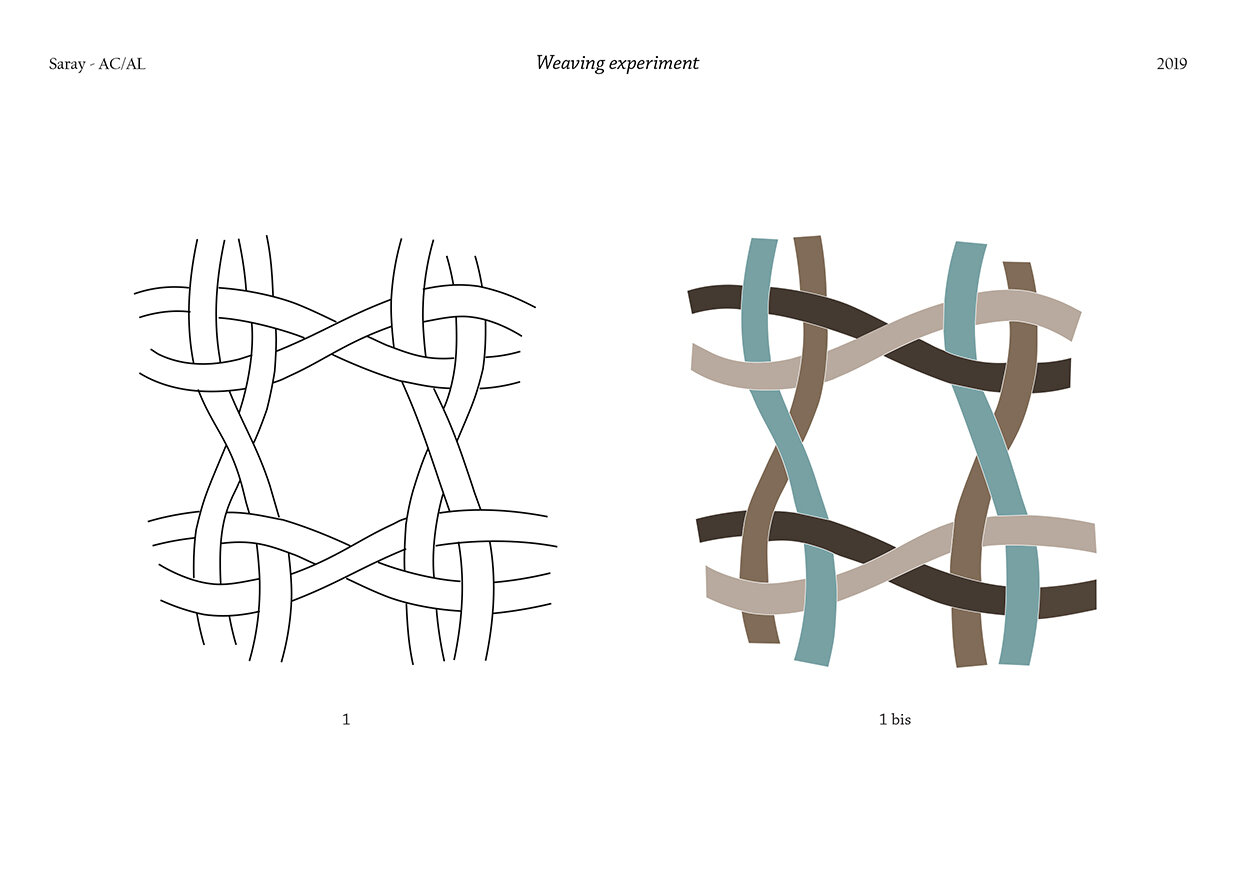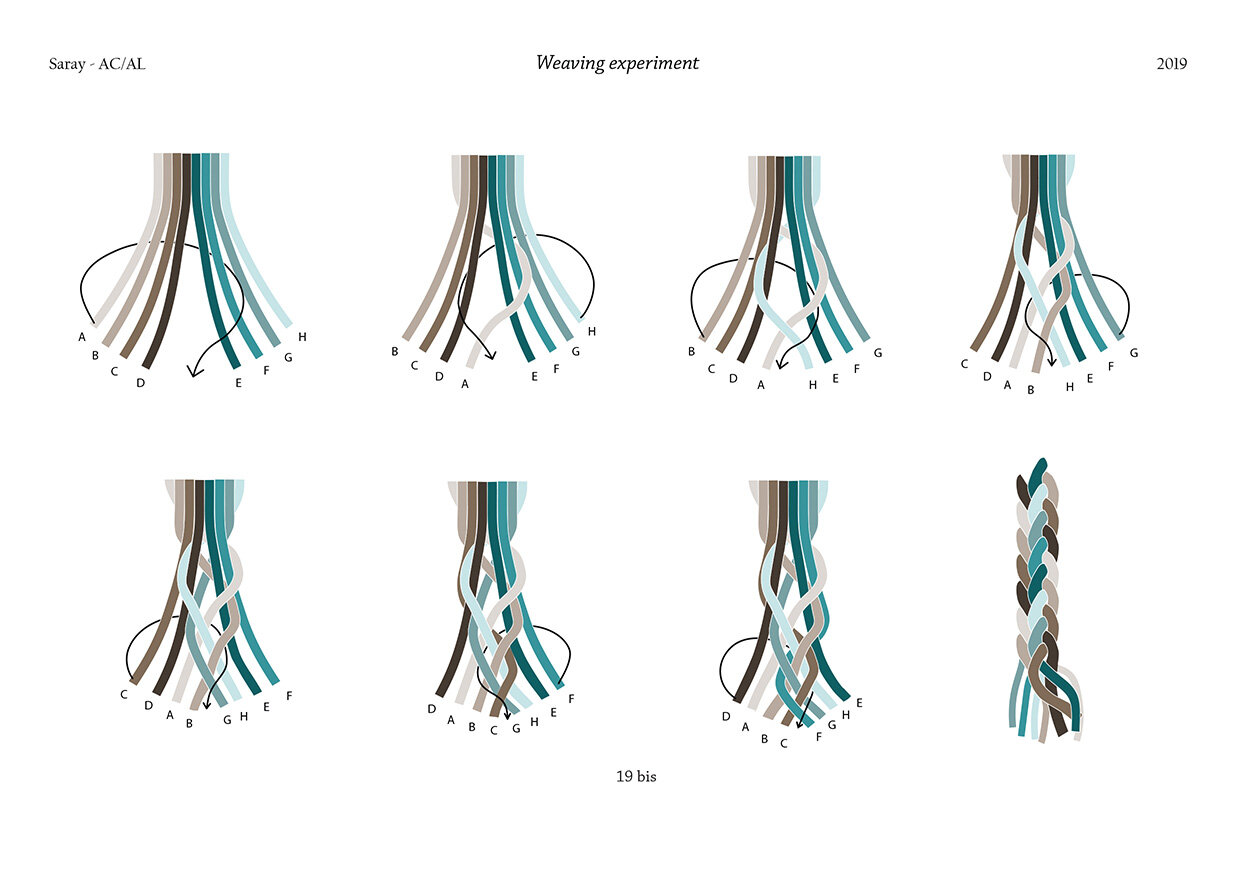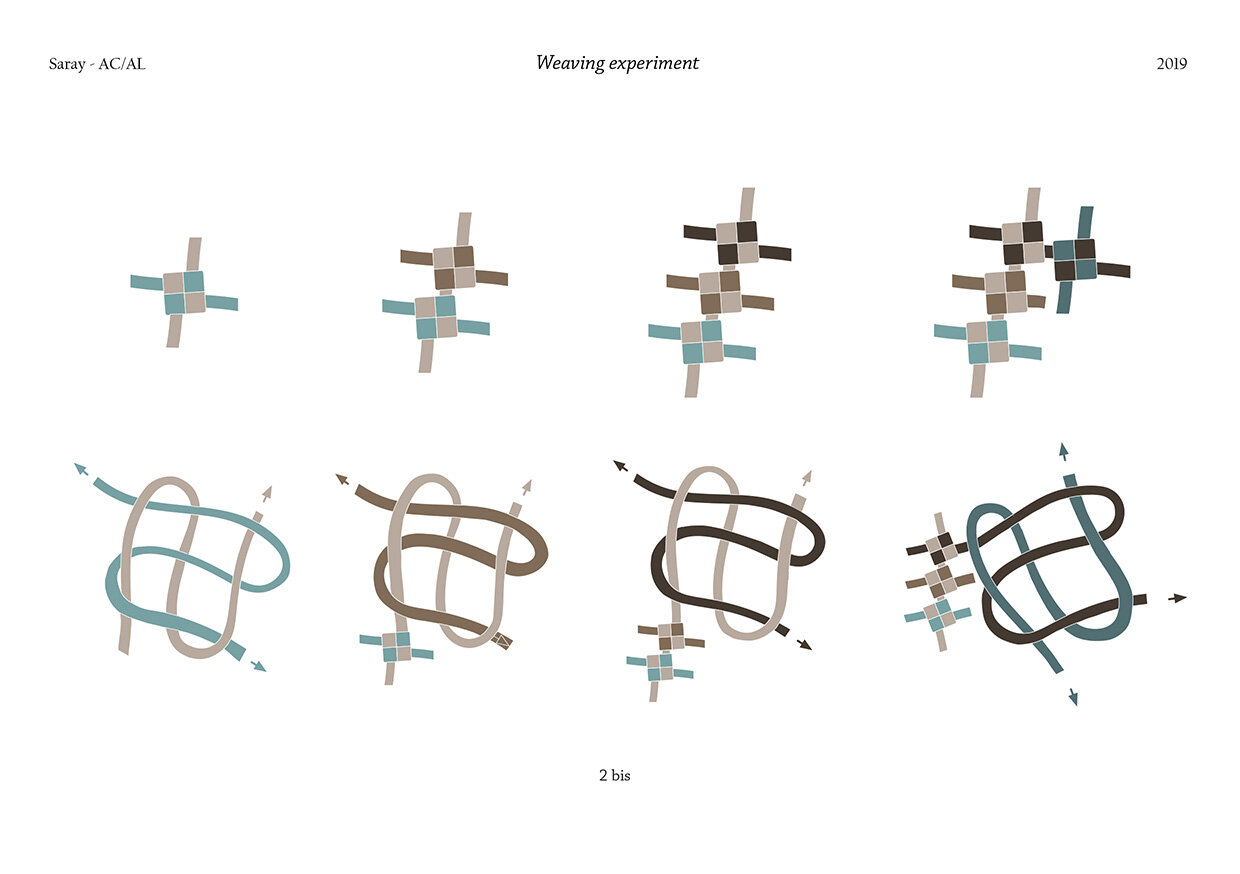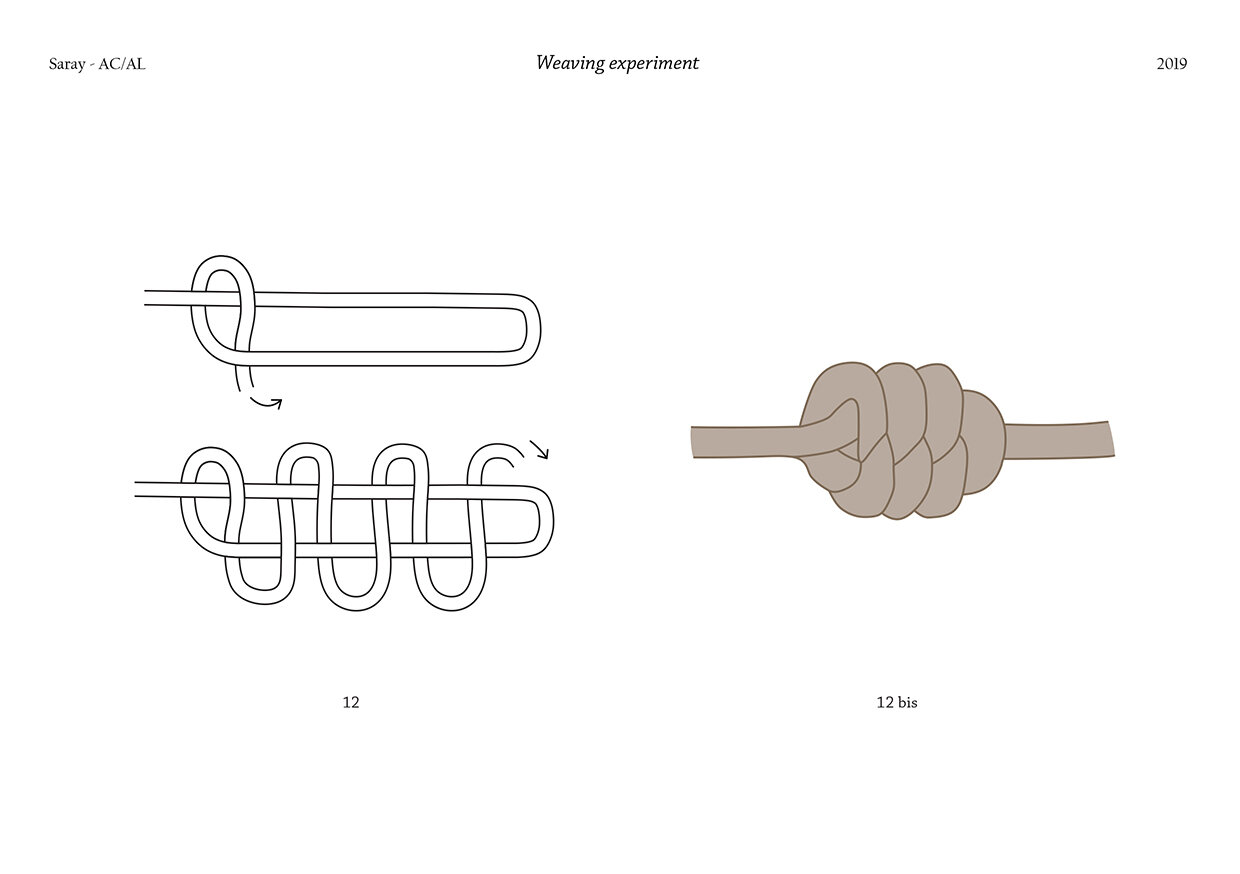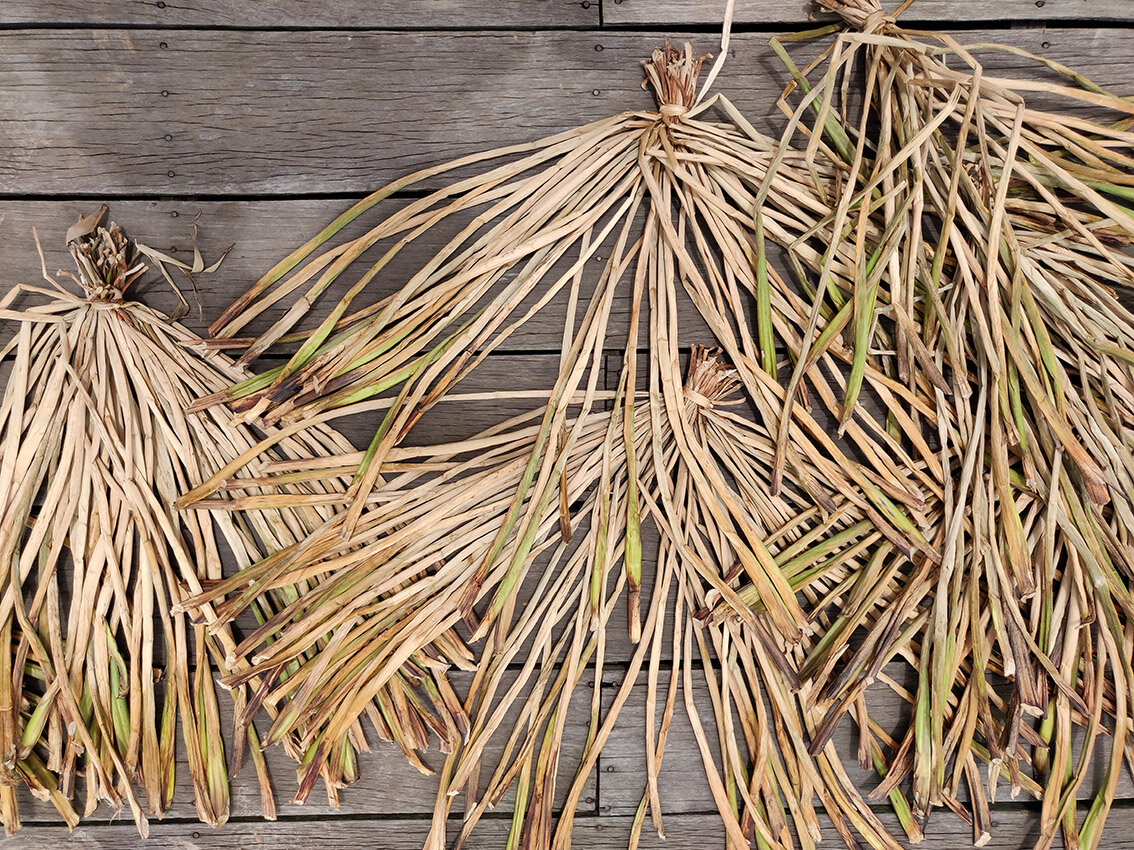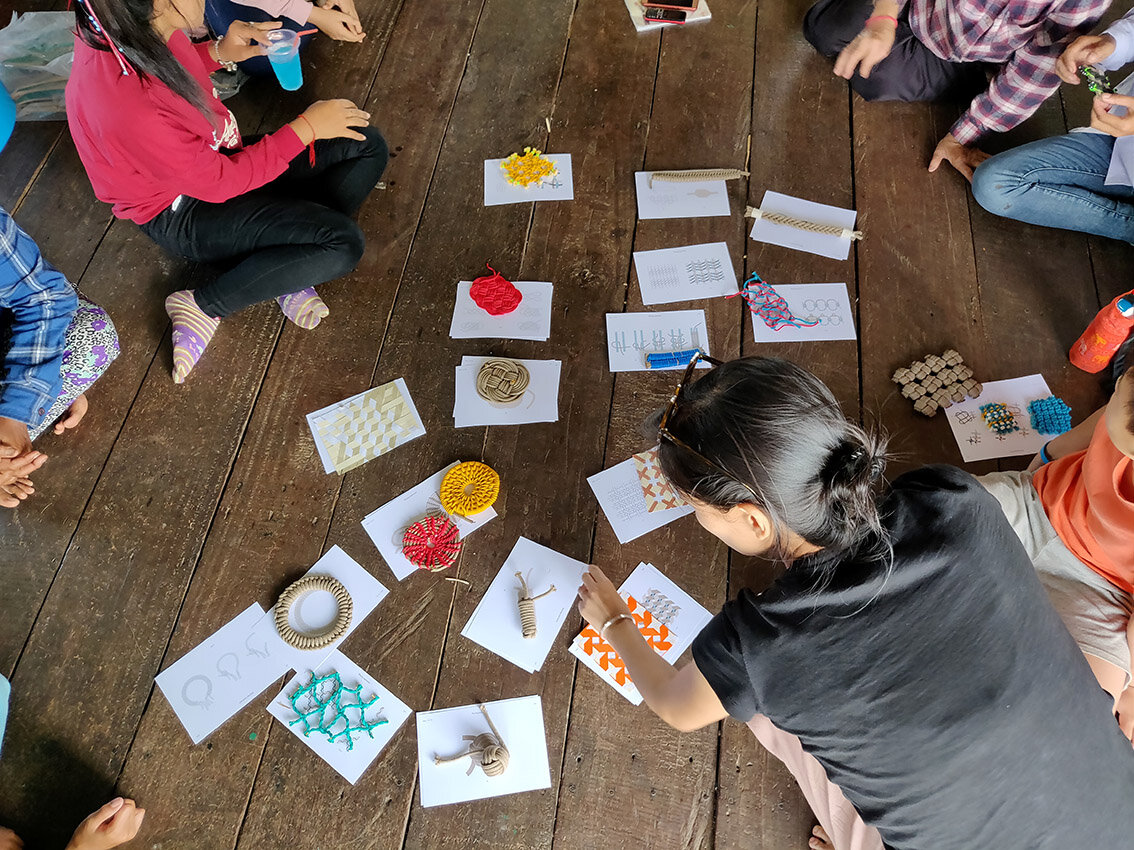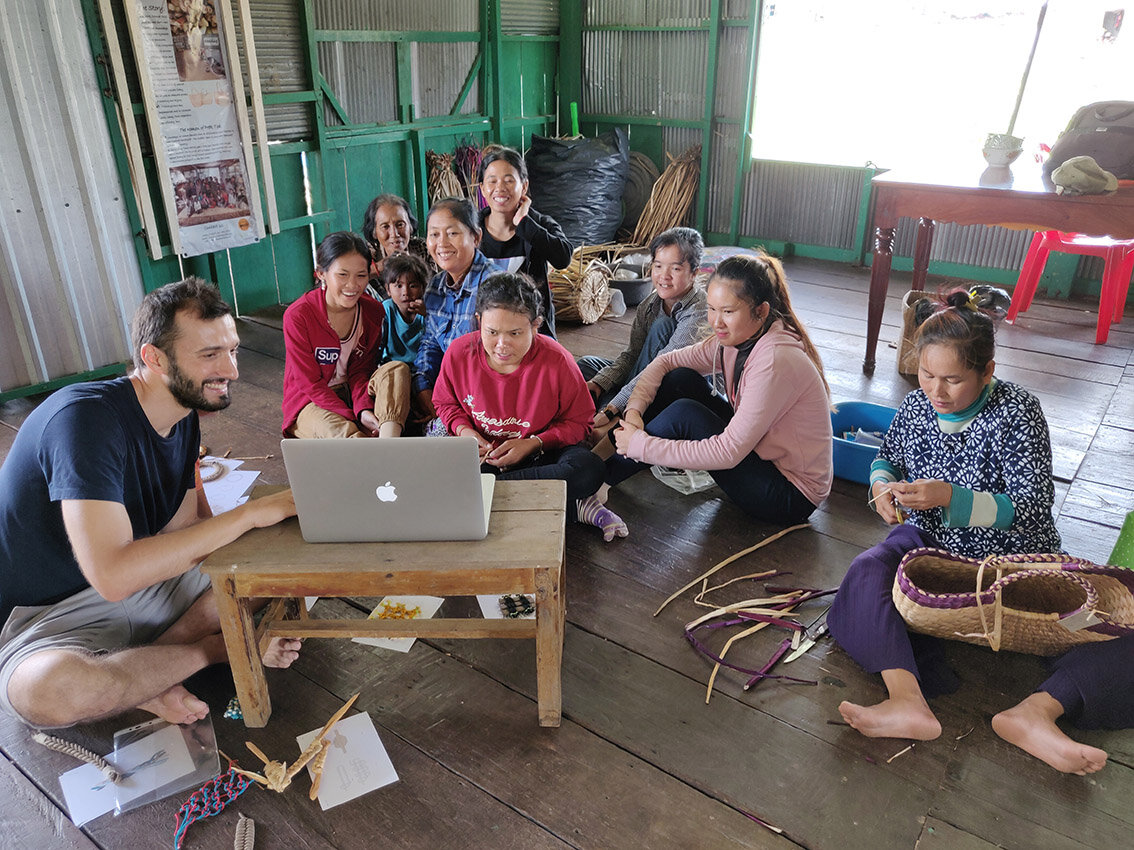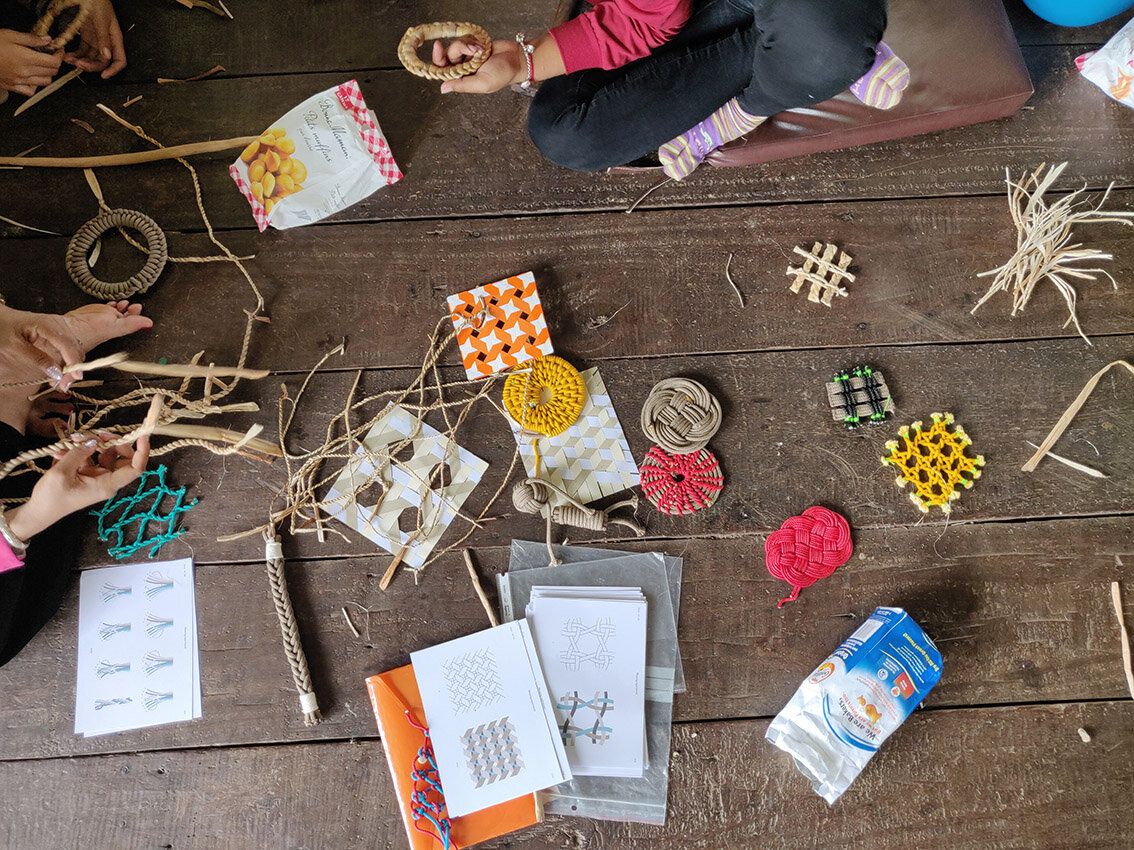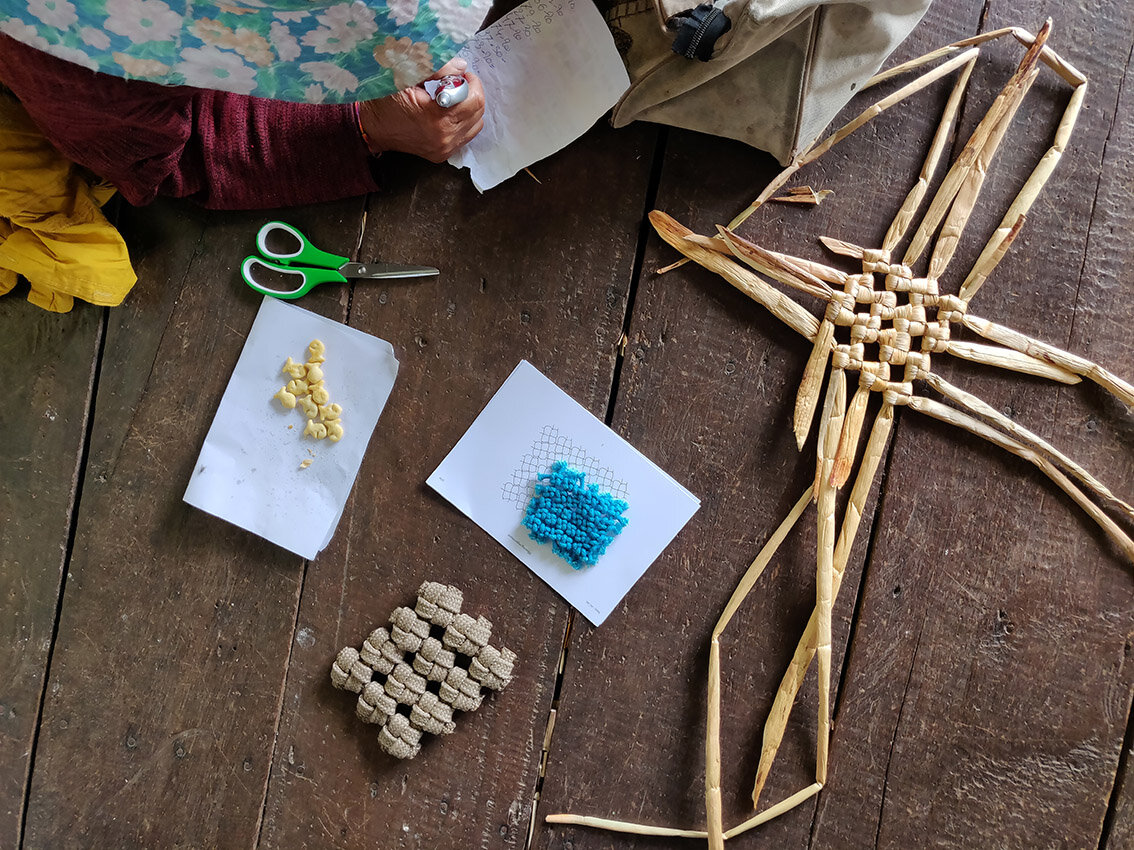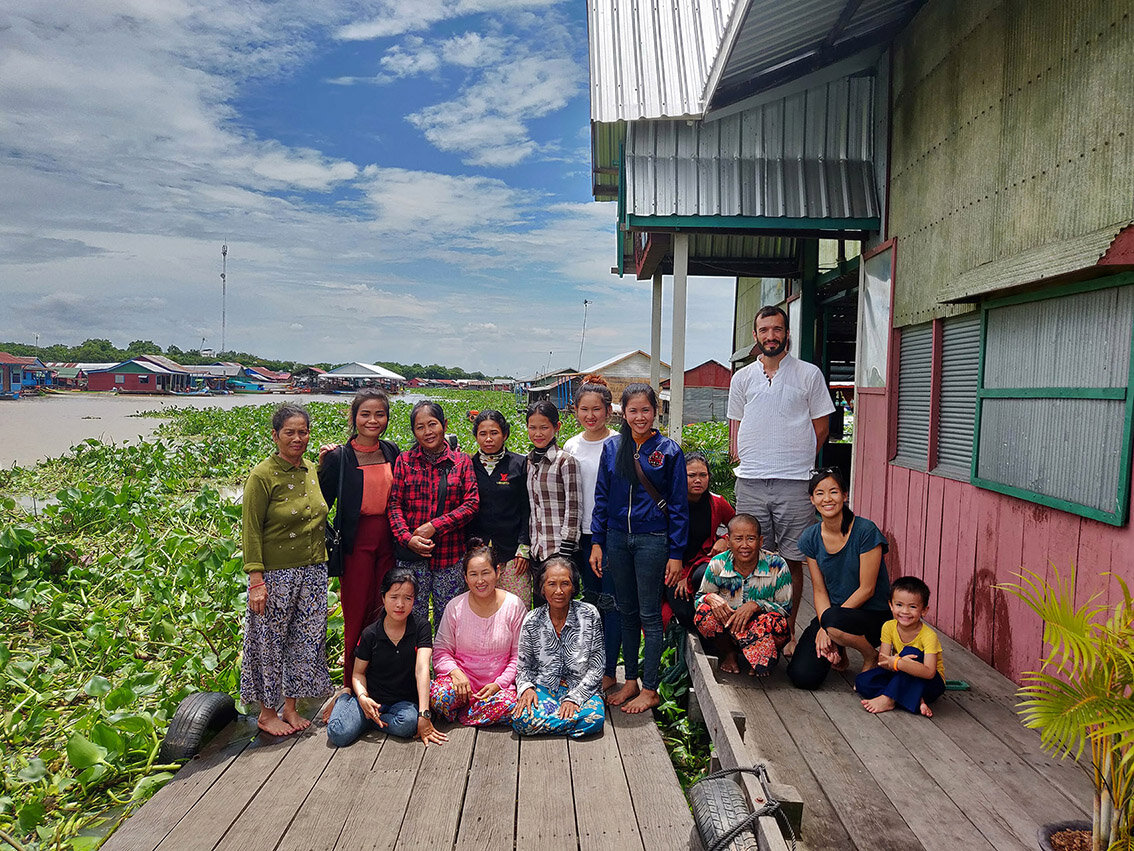Water hyacinth weaving
Following our first workshop on water hyacinth fiber with Saray in 2009, we went back to Cambodia to pursue our collaboration with the craftswomen and spend time to teach and experiment new weaving techniques, in order to innovate and create singular products that would allow their cooperative’s business to face the competitive and saturated market.
Site
Prek Toal, Cambodia
Date
August 2019
Team
Amandine Chhor (designer)
Aïssa Logerot (designer)
Léonore Durand (intern)
Osmose (local collaborator)
Saray cooperative (craftswomen)
―
As we would stay for a shorter period, we did extensive research on various traditional weaves before our arrival to Prek Toal. Our experiments allowed us to understand the structural and aesthetic possibilities of the different knotting and weaving techniques. We also produced a manual of diagrams and drawings to explain precisely to the craftswomen how to reproduce them with water hyacinth.
―
Some weavings were obviously very interesting, whereas others were too complicated or not strong enough to be usable with water hyacinth. At the end of our few days in the floating village, we drew a small family of objects to show the women some examples of objects with the newly acquired techniques, namely a family of three trivets and one model of basket. We encouraged them to continue to practice the new techniques and include them in their further collection. Our coming project in Cambodia will allow us to see how the women will have reappropriated the new weavings techniques in singular products.
What we’ve done:
1.
Analysis and research of new weaving techniques. Experimentations and realization of samples with cotton and synthetic ropes.
2.
Creation of a 30 pages pedagogical manual to explain precisely the weaving techniques and let a transmission tool on site.
3.
We made weaving demonstrations with water hyacinth, and trained the craftswomen to the new techniques.
We designed some product concepts to show the women the possibilities of the new weavings.
